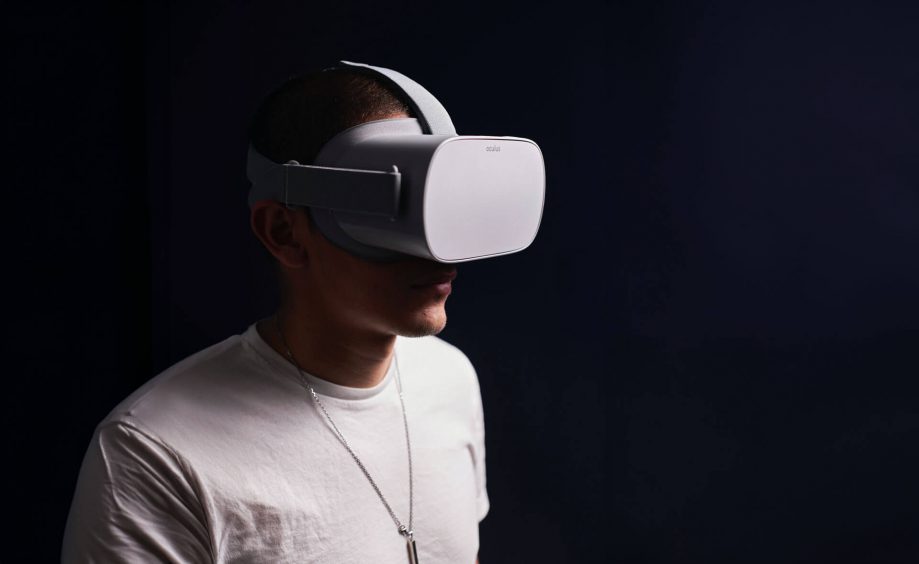The future of technology is ‘augmentation‘, with a capital A. Visionaries describe an intelligent world in rapid evolution, made up of “augmented humans living in augmented realities ». In this augmented world, everything will become smarter and more alive. Each of us will benefit from superpowers on demand, to create beautiful things, solve important problems and enjoy a richer life.
That future is not far away. In fact, intelligent devices are being developed every day to improve our health, strength, abilities and enjoyment. However, we are only just scratching the surface of the potential of augmentation, particularly in the area of learning.
“A-Learning”, Augmented Learning
In order to learn and adapt to our world, which is constantly changing at an ever faster pace, shouldn’t we, as human beings, be thinking about increasing our own capacity to learn and adapt by using augmentation technologies?What would that mean?
We could augment our brains with implants and ‘merge’ with artificial intelligence. Elon Musk certainly believes in it and is working on it. But that still seems quite distant, relatively scary.
We could live with AI at hand, transforming our complex world into simpler concepts and possibilities. This is what Google, Amazon and Microsoft offer with Assistant, Alexa or Cortana. But that would only make us more dependent…
Is there a middle ground? Could we increase our own intelligence with more effective learning, based on augmentation technologies accessible today? This is where the concept of A-Learning comes in.
Personal computers, the Internet and mobile phones have made a huge contribution toE-Learningwith almost infinite sources of content, tutorials, videos, online courses, moocs, mobile applications, etc. E-Learning offers every individual and every organisation the opportunity acquire and transmit knowledge transmit knowledge in a rich, autonomous and progressive way. But we all know that knowledge in itself is not enough for learning to take root. Learning also involves acquiring know-how and interpersonal skills.
This practical knowledge is difficult to express, conceptualise and transmit in the form of theoretical knowledge. This is where the limitations of e-learning become glaringly apparent, generally compensated for by physical training, which in turn fails when it comes to deployment at scale.
A-Learning has the potential not only to transmit knowledge effectively, but also know-how and interpersonal skills, by increasing the number of experts and learners, thereby optimising transfers between teachers and learners.
The augmented teacher
Teachers need better ways of translating their knowledge, know-how and interpersonal skills into digital form. This digitization process is complex when it is not limited to knowledge, that is to say, definitions, rules, formulas, recipes, or secrets Know-how, like interpersonal skills, is a mixture of information, movement and emotion. The augmented teacher must be able to capture and transfer these three componentsçtransparently and with a high level of fidelity. It needs highly effective means of recording its applications, gestures, behaviour and sensations. And, it must be able to do so naturally with the least possible effort and loss.
Today, we have powerful technologies to start equipping teachers effectively in this direction. Cameras, microphones, motion detectors, bio-sensors and even brain sensors could be combined with cloud computing and AI algorithms to get closer and closer to the teacher’s perspectives, sensations, thoughts and internal states in order to model their expertise digitally. Know-how and interpersonal skills would then be transposed into new types of learning media, ideally transmittedjust as effectively to augmented learners.
The augmented learner
Symmetrically, learners need better digital resources to develop and acquire knowledge, know-how and interpersonal skills. Learning requires not only understanding and memorization of information, but also mastery of gestures, postures, and behaviors. Reflexes, automatisms and the control of reactions and emotions are complex to practise and to acquire digitally. The augmented learner must be given the opportunity to practise and assess all these skills naturally, with as little friction as possible, and in a supervised manner.
Virtual reality and augmented reality already allow learners to put themselves in situations to apply knowledge, to train physically, emotionally and personally, to rehearse and remember better, to fail and try again in complete safety.
Challenge
A-learning is already here, it’s just not equitably distributed.
People and organizations need to understand augmented technologies, to accept them, and adapt to them. They need to change habits and change paradigms to succeed in the intelligent world. And this is a challenge, not for the future but for today, because augmenting technologies are cumulative: the more you have, the more powerful you are, the more successful you’ll be. People and organizations missing the train may never catch up.
So, here is the challenge: how to build the best conditions where people and organizations embrace the augmented world happily and successfully in a sustainable way? An augmented humanity will thrive only if all people and organizations can understand, acquire, appreciate, and master the augmented technologies. Augmented Learning, then, seems to be the best moveto build a prosperous, augmented society.
A new era
The fact is that the shift from E-learning to A-learning is already happening It just hasn’t had a name, until now. At Uptale, we started with an intuition: that Virtual Reality could help people learn better, over faster, smarter. After 2 years of research and practice, we came to the conclusion that immersive technologies were just the first step towards increasing the number of teachers and learners.
Immersive Learning allows people to concentrate, to learn in a situation at any time and from anywhere, by failing without consequences, by repeating life situations as many times as necessary, by experiencing real emotions…
Science through neuro-pedagogy confirms our intuition: improvement of attention and the memorization, optimization of retrieval through contexts, control and targeting of working and procedural memories, development of long-term memory through solicitation of episodic memory, reinforced anchoring through emotional memory… The possibilities are countless and the potential infinite
Uptale has one mission: to bring teachers and learners closer together through A Learning. With Uptale, the eyes, ears, and hands of the teacher are captured with new types of cameras and motion sensors. The teacher can digitize his knowledge, skills, and behaviors to produce impactful A-learning experiences. These experiences are then efficiently proposed to the learner who can practice them with all his senses.
We will move at the speed of augmentation technologies and discoveries in neuroscience. We are working to bring A-learning to all the people and organizations who have the ambition to thrive in the augmented world.
Discover A-Learning in action
Augmented Trainer
Teachers need better ways to convert their knowledge, know-how and interpersonal skills into digital form. This digitization process is complex when it is not limited to knowledge, i.e. definitions, rules, formulas, recipes or secrets. Know-how, is a mix of information, movement and emotion. The augmented teacher needs to be able to capture and transfer these three components seamlessly and with a high level of fidelity. He needs highly effective means of recording his applications, gestures, behaviors and sensations. And they need to be able to do so naturally, with the least possible effort and loss.
Today, we have powerful technologies to start equipping teachers effectively in this direction. Cameras, microphones, motion detectors, bio-sensors and even brain sensors could be combined with cloud computing and AI algorithms to get closer and closer to the teacher’s perspectives, sensations, thoughts and internal states in order to model his expertise in a digital way. Know-how and savoir-être would then be transposed into new types of learning media, ideally transmitted just as effectively to augmented learners.

